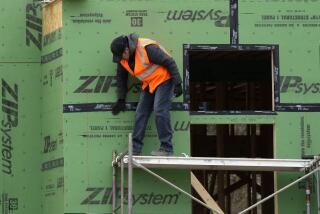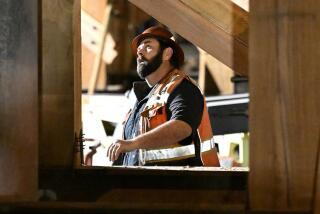Majority of new jobs in recovery are low-paying, study finds
- Share via
WASHINGTON -- Although six in 10 jobs lost during the Great Recession paid mid-level wages, the majority of new jobs created in the recovery -- positions such as store clerks, laborers and home healthcare aides -- pay much less, according to a new study.
The findings highlight concerns about a shrinking middle class and pose another obstacle to getting the economy back on track, said Annette Bernhardt, policy co-director at the National Employment Law Project, which conducted the study.
“The recovery continues to be skewed toward low-wage jobs, reinforcing the rise in inequality and America’s deficit of good jobs,” she said. “While there’s understandably a lot of focus on getting employment back to pre-recession levels, the quality of jobs is rapidly emerging as a second front in the struggling recovery.”
Lower-paying jobs, with median hourly wages from $7.69 to $13.83, accounted for just 21% of the job losses during the recession. But they’ve made up about 58% of the job growth from the end of the recession in late 2009 through early 2012.
Those jobs have been concentrated in three industries: food services, retail and employment services, such as office clerks and customer service representatives, the study found.
In contrast, mid-wage occupations with median hourly wages from $13.84 to $21.13 -- jobs such as construction workers, real estate brokers, and data entry clerks -- have accounted for just 22% of the new jobs in the recovery after making up 60% of the job losses in the recession.
Higher-wage occupations, with median hourly pay above $21.13 accounted for about 19% of the recession job losses and have made up about 20% of the jobs gained in the recovery, the study said.
The study covered jobs created from the first quarter of 2010 through the first quarter of 2012.
The recession and its aftermath have exacerbated a three-decade trend of growing wage inequality fueled by a shrinking number of mid-wage jobs, the study said.
Since the first quarter of 2001, employment in mid-wage jobs has decreased by 7.3%. Meanwhile, lower-wage jobs have grown by 8.7% and higher-wage jobs have increased by 6.6%.
“The economy has fewer good jobs now than it did at the start of the 21st century,” said Bernhardt, the study’s coauthor.
She said there was no “single magic bullet” to reversing the trend.
But Washington officials could help improve the situation, Bernhardt added, by extending unemployment benefits, raising the minimum wage and enacting policies to stimulate job growth in highway construction and other infrastructure work, as well as helping prevent layoffs of teachers, police officers and firefighters.
ALSO:
Stocks rally ahead of Bernanke speech
Retailers get a back-to-school sales boost
Romney says he’ll do what Obama couldn’t
More to Read
Inside the business of entertainment
The Wide Shot brings you news, analysis and insights on everything from streaming wars to production — and what it all means for the future.
You may occasionally receive promotional content from the Los Angeles Times.











